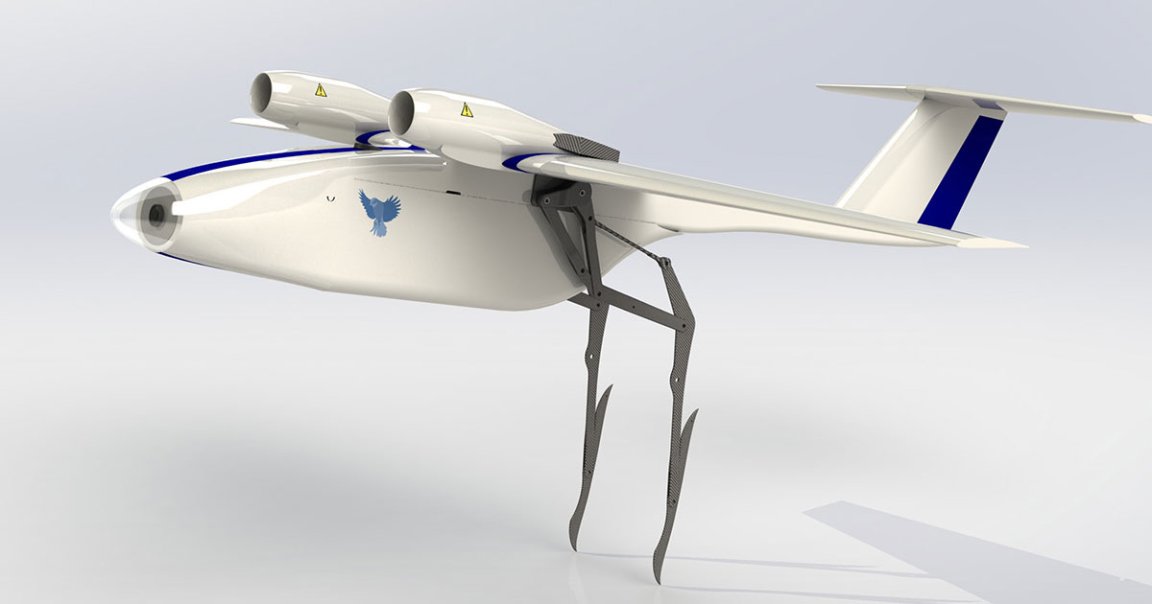
Rare Bird
Once you know a little about Passerine’s drones, the startup’s name — a reference to a category of birds that perch — makes a lot more sense.
By giving its drones bird-like legs, the company believes they’ll be able to delivery heavy payloads with no runway, a fundamental limitation of existing drone designs — and if Passerine’s upcoming pilot programs go as hoped, the avian-inspired drones could soon be making deliveries in the places that need them most.
Jump Start
Most drones excel at one of two things. They can either take off and land without a runway, or they can quickly transport heavy payloads across long distances. But drones that can do the former can’t usually do the latter, and vice versa.
The problem is that the rotors needed for a vertical takeoff — the kind that a drone can manage with limited space — aren’t terribly efficient for flight. Meanwhile, the fixed wings that are efficient for flight can’t get a drone off the ground vertically.
In a recently published interview with IEEE Spectrum, Passerine CEO Matthew Whalley explained how the company’s drones can both launch without a runway and fly efficiently.
“When it launches, it essentially jumps into the air,” he said. “The launch is very similar to a bird… When it jumps, it’s not about gaining height, it’s about launching the drone forward to get it up past its minimum flight speed, and at that point it’s flying like a conventional aircraft.”

Idea With Legs
Whalley believes Passerine is less than two months from figuring out how to complete a takeoff and landing cycle. Then, in the second quarter of 2019, it plans to launch several pilot projects with its bird-inspired drones.
If those go well, the company hopes to put its drones to use in the areas Whalley believes they could have the biggest impact.
“[S]pecifically in Africa, but also generally in the developing world, there is potential for this massive improvement by using drones, but there’s not a lot of infrastructure, not a lot of places where you could use a conventional fixed-wing airplane or drone,” he told IEEE Spectrum. “So you need something that can operate from very low infrastructure, and the legs came about as being a more efficient way of getting a long-range airplane into the air rather than trying to strap a quadcopter to it.”
READ MORE: Delivery Drones Use Bird-Inspired Legs to Jump Into the Air [IEEE Spectrum]
More on drones: A Child Was Immunized by the World’s First Drone-Delivered Vaccine